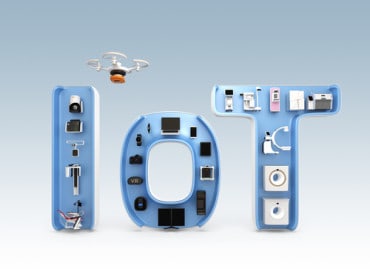
More and more business transactions are moving to real-time, so why are real-time payments lagging and when can you expect faster payment systems?
Many aspects of business are moving to real-time. We can see how customers are responding to promotions as they are offered. We can see where production bottlenecks may be occurring as they are happening – and even predict and remedy them before those bottlenecks occur. We can see how products are being used and predict and remedy wear and tear before it happens.
But there’s one important thing that isn’t happening real-time as of yet, and that’s payments. Even with electronic funds transfer, there’s often a lag time as funds clear accounts to move to others. Some people even still send paper checks.
The benefits and challenges of moving to a real-time payments world was addressed in a recent set of reports by The Faster Payments Task Force, convened by the U.S Federal Reserve two years ago to identify the goals and attributes of effective faster payment systems; propose solutions and champion the payment industry to take steps toward implementation and adoption of faster payments capabilities. In the group’s mission statement, it notes that it “envisions a system where solutions both compete and interoperate to provide payment services that are faster, ubiquitous, broadly inclusive, safe, highly secure, and efficient.”
Real-time payments at critical juncture
In its first report, issued at the beginning of this year, the task force’s authors observed that “the U.S. payment system is at a critical point in its evolution. Improvements in computing speed and information processing allow payments to take place faster than ever before. Nonbank providers such as technology companies have begun to enter the market and develop innovative new solutions to meet the changing expectations of consumers and businesses for faster payment methods.”
[ Related: IoT in Retail Marketing: Three Ways to Engage Customers ]
However, the report continues, “although innovation is taking place, faster payments solutions are being developed in a fragmented way without collaboration across the payment industry or broad adoption across the market as a whole.” While “many countries have already upgraded their payment systems to take advantage of improvements in technology, allowing payments to be sent within seconds between payers and recipients,” the U.S., with more than 10,000 depository institutions and hundreds of nonbank payment providers, “is more challenging to implement improvements to the payments infrastructures in a coordinated way.” There’s a need for greater investment, the report urges.
Payment industry needs to act together
The task force report’s authors state that the industry needs to act to prevent further fragmentation. “As multiple faster payments solutions have come to market, many have developed independently of each other and have not focused on the ability for any entity to send or receive a payment, across more than one system, to or from any other entity.”
In addition, there’s demand from both businesses and consumers for faster payments. As they note, “uncertainty in payment timing and delay of funds receipt can be costly to consumers and businesses as they manage their account balances from day to day. Faster payment solutions can address these challenges by providing prompt and transparent payment status information and allowing faster clearing and good funds availability to the payee. Businesses and consumers can benefit from improved cash flow management and avoidance of overdraft and late fees.”
[ Related: IoT in Retail Marketing: Three Ways to Engage Customers ]
In addition, the move to faster payments “provides an opportunity to improve the user experience with smarter, safe payment technologies,” the report’s authors state.
The road to real-time payments
In the recently released second part of its report, the task force lays out several recommendations for getting started on the road to real-time payments. The task force “recommends a framework for collaboration, decision-making, and rule setting, as well as regulations that support the faster payments ecosystem.” In terms of infrastructure, the report’s authors urge the design of directory services to help solutions interoperate. The Federal Reserve also needs faster settlement mechanisms.
In addition, the report’s authors recommend that any real-time payment system be ironclad against security threats, as well as the flexibility to continually innovate.
While the establishment of a nationwide, ubiquitous real-time payment system may be a ways off, the first steps are now being taken to make faster payments a reality. The 24-hour wait for funds is no longer viable in today’s always-on global economy.





























